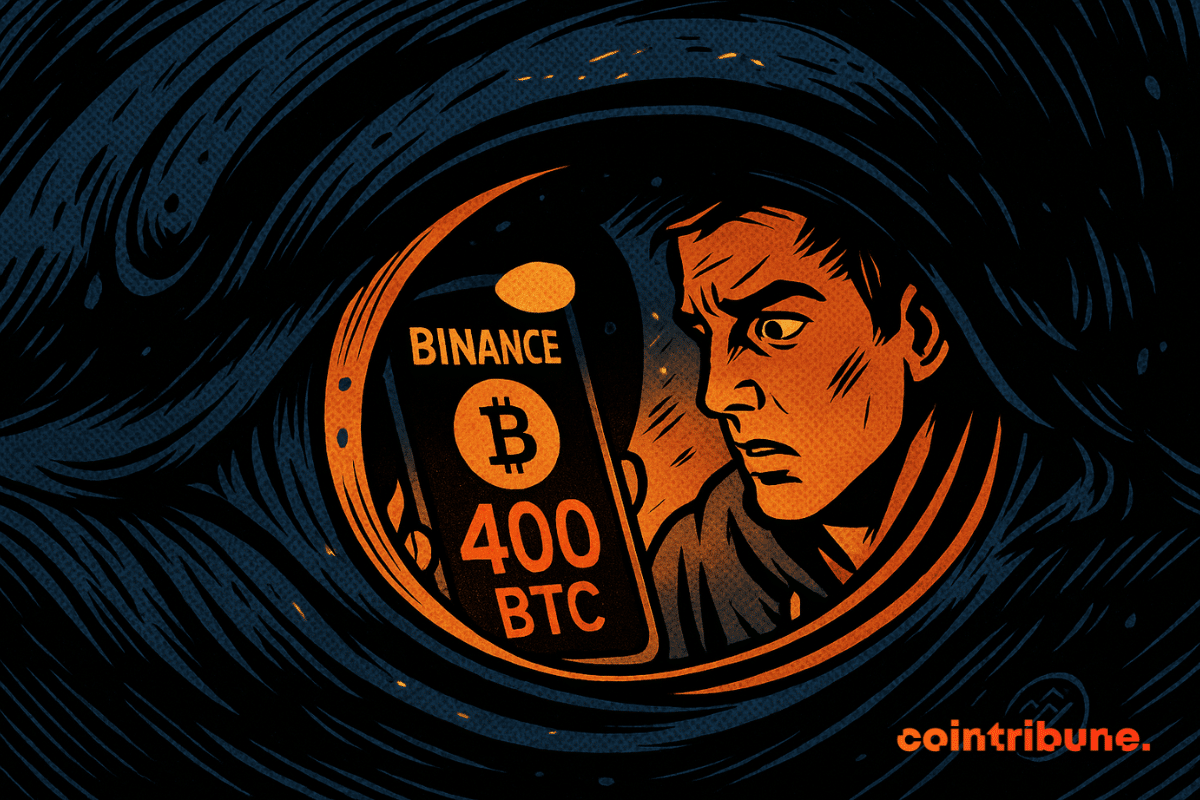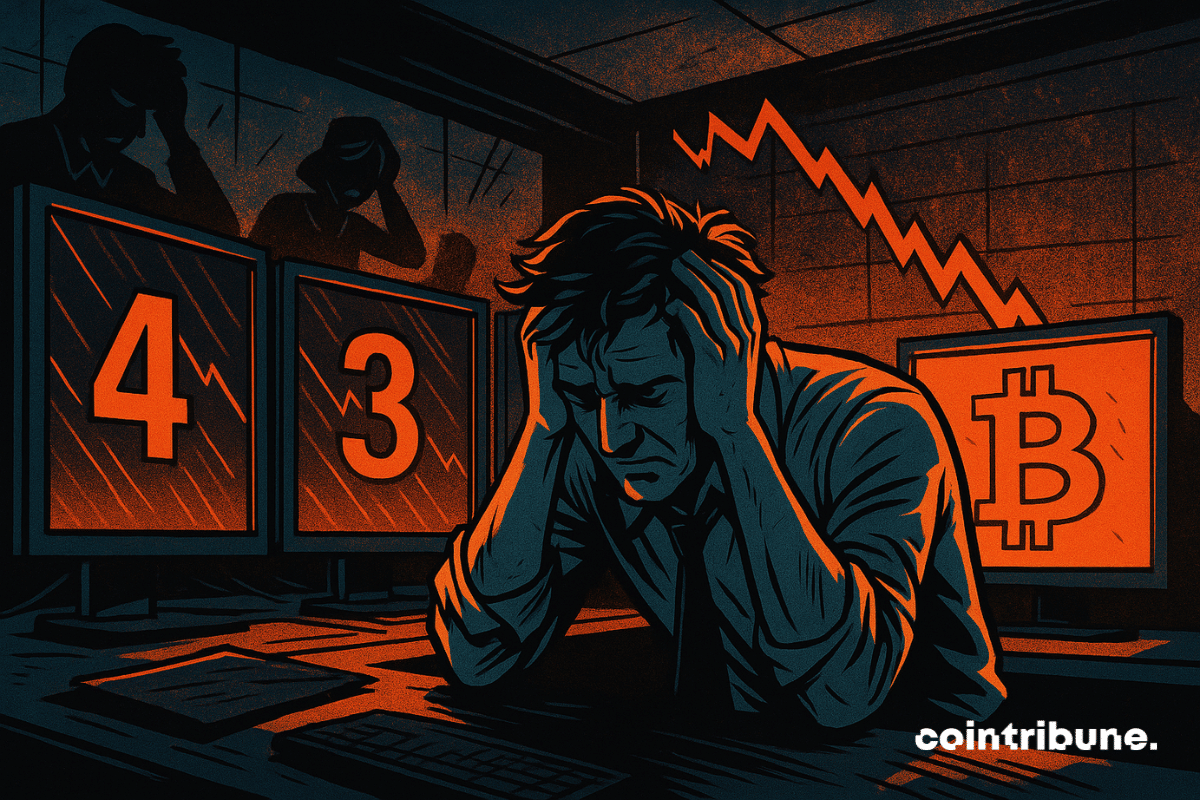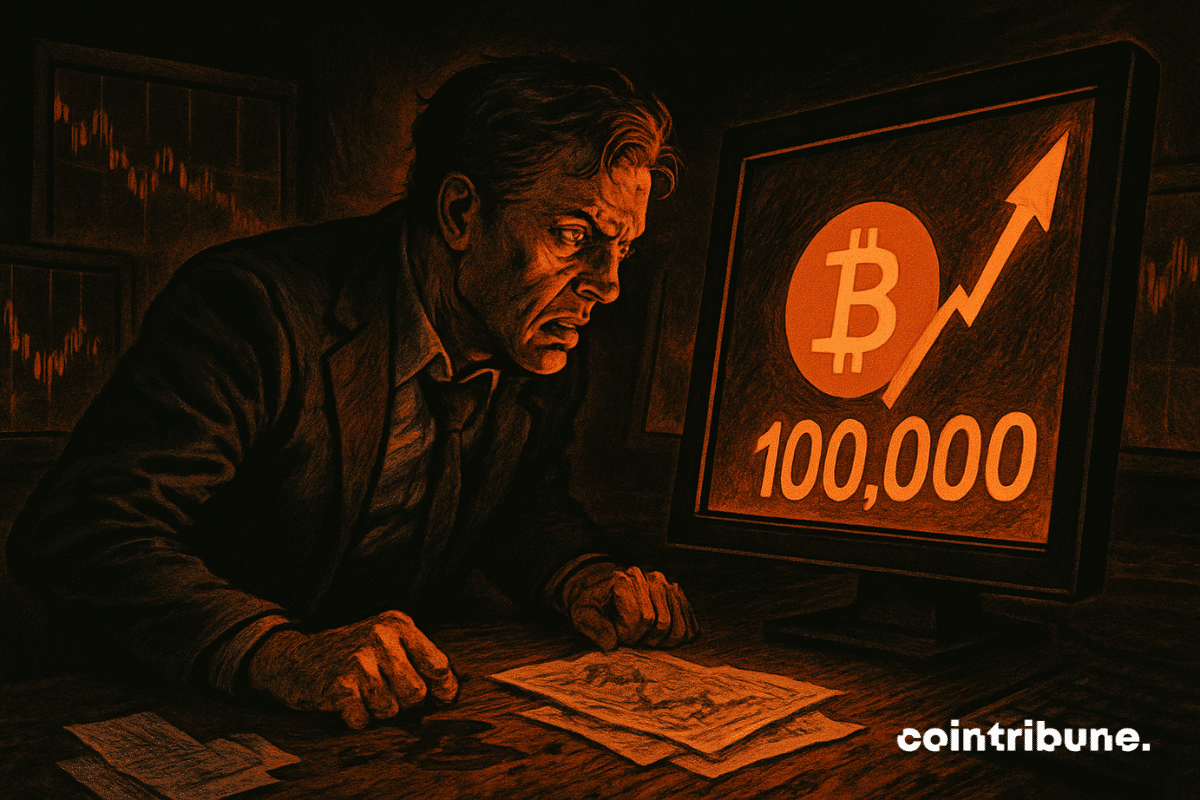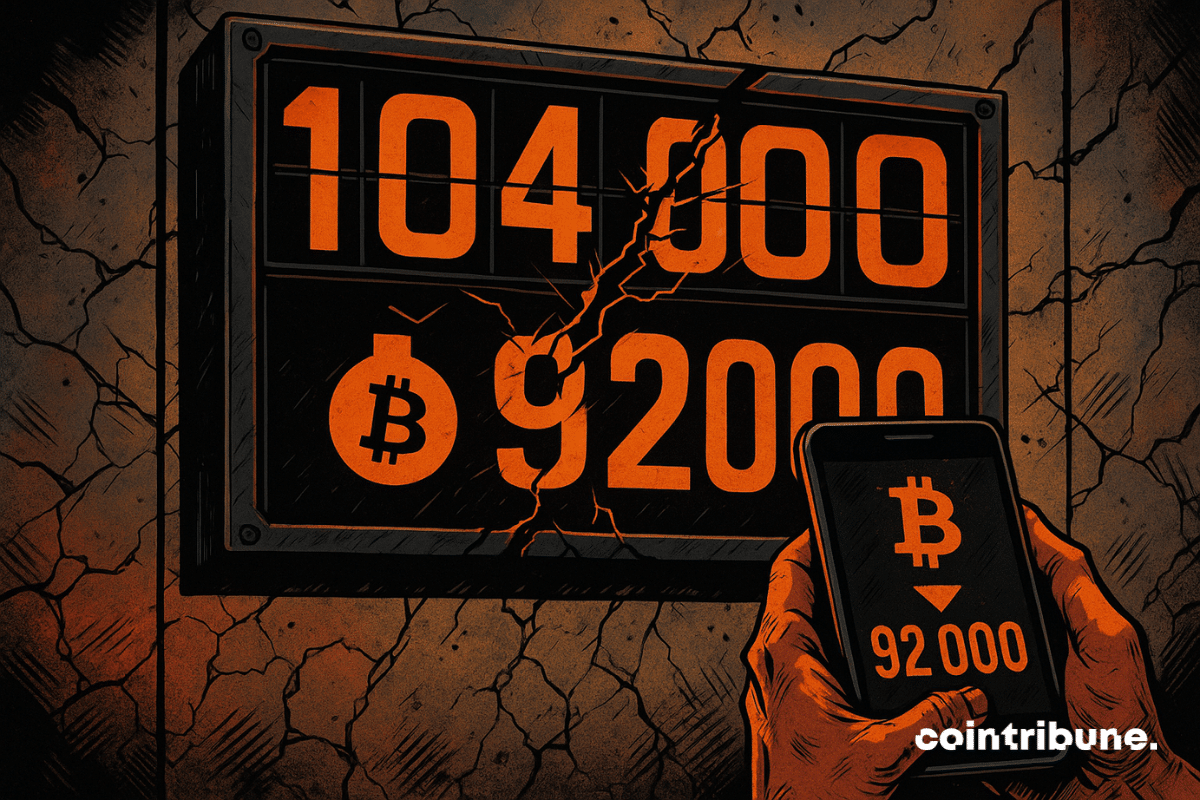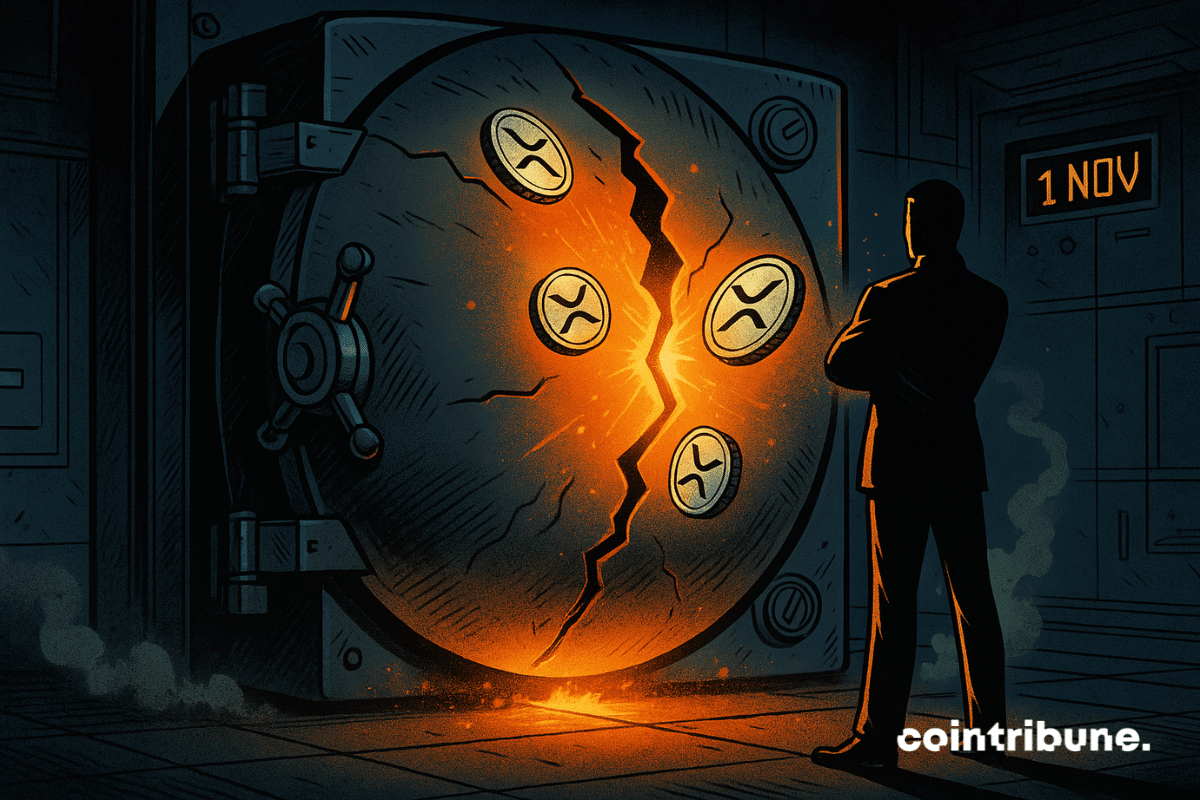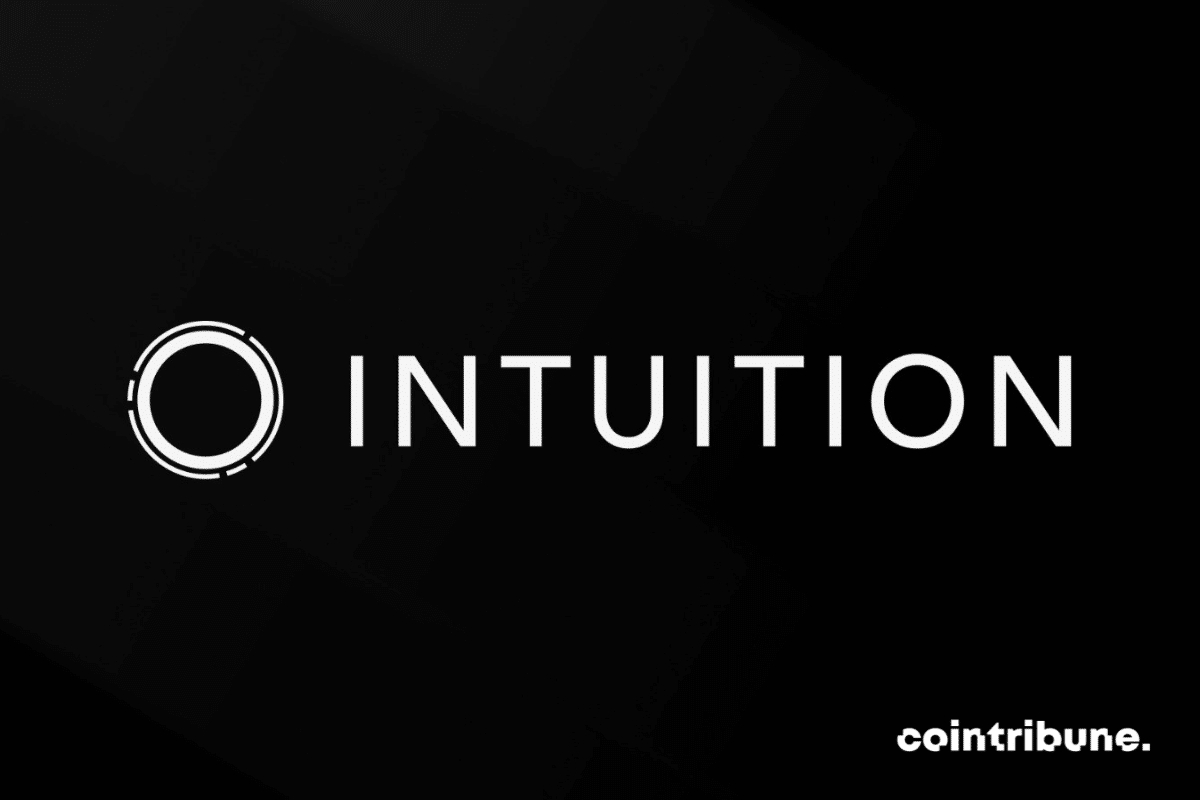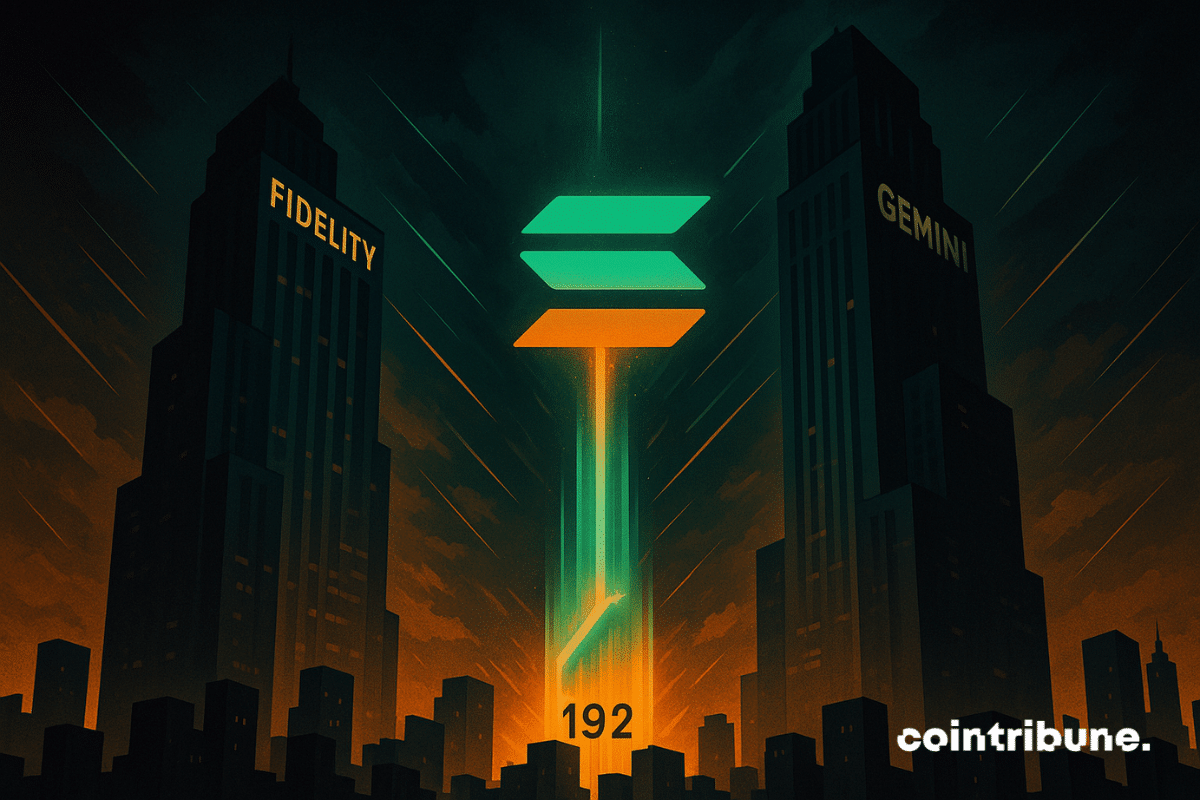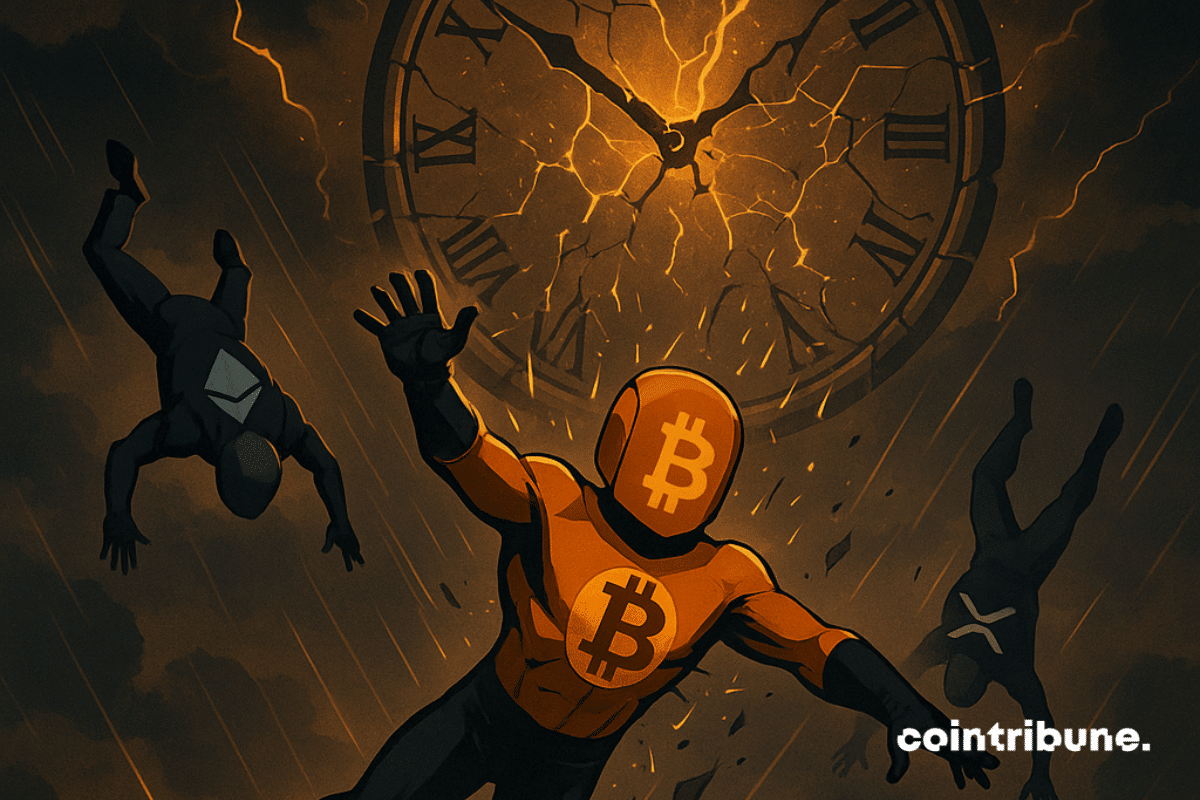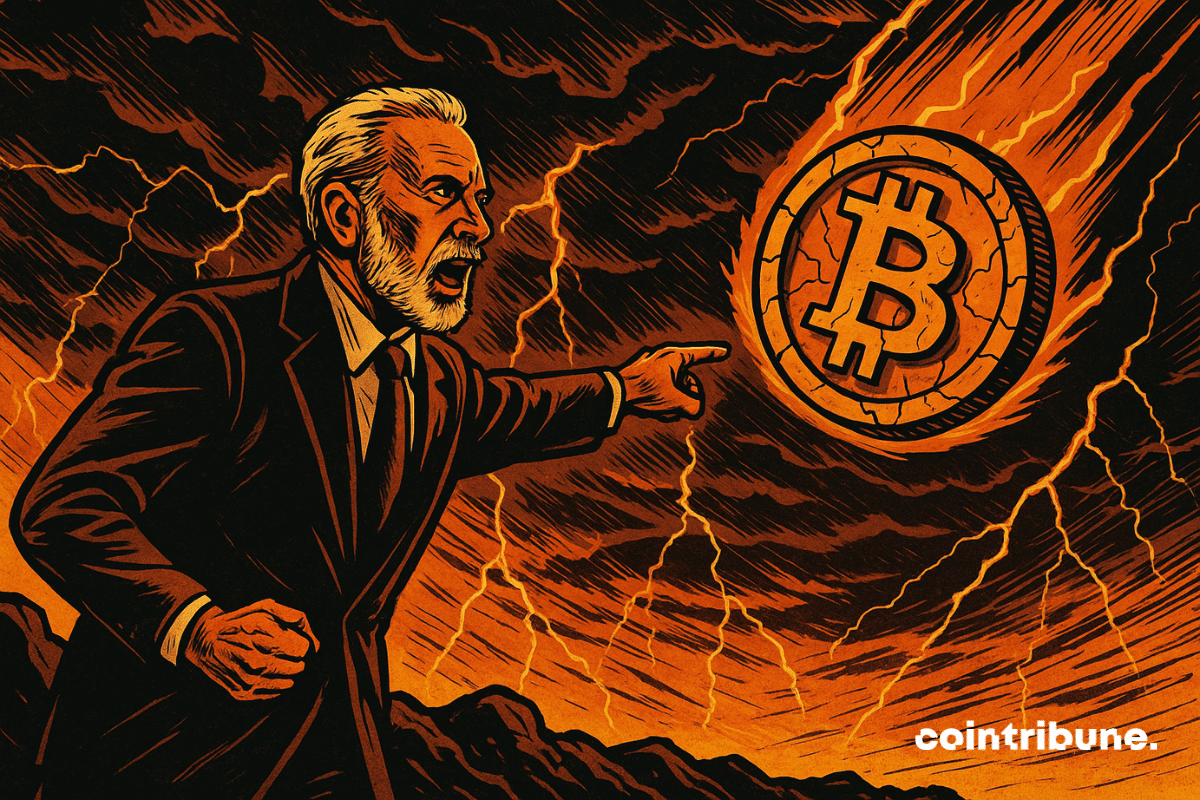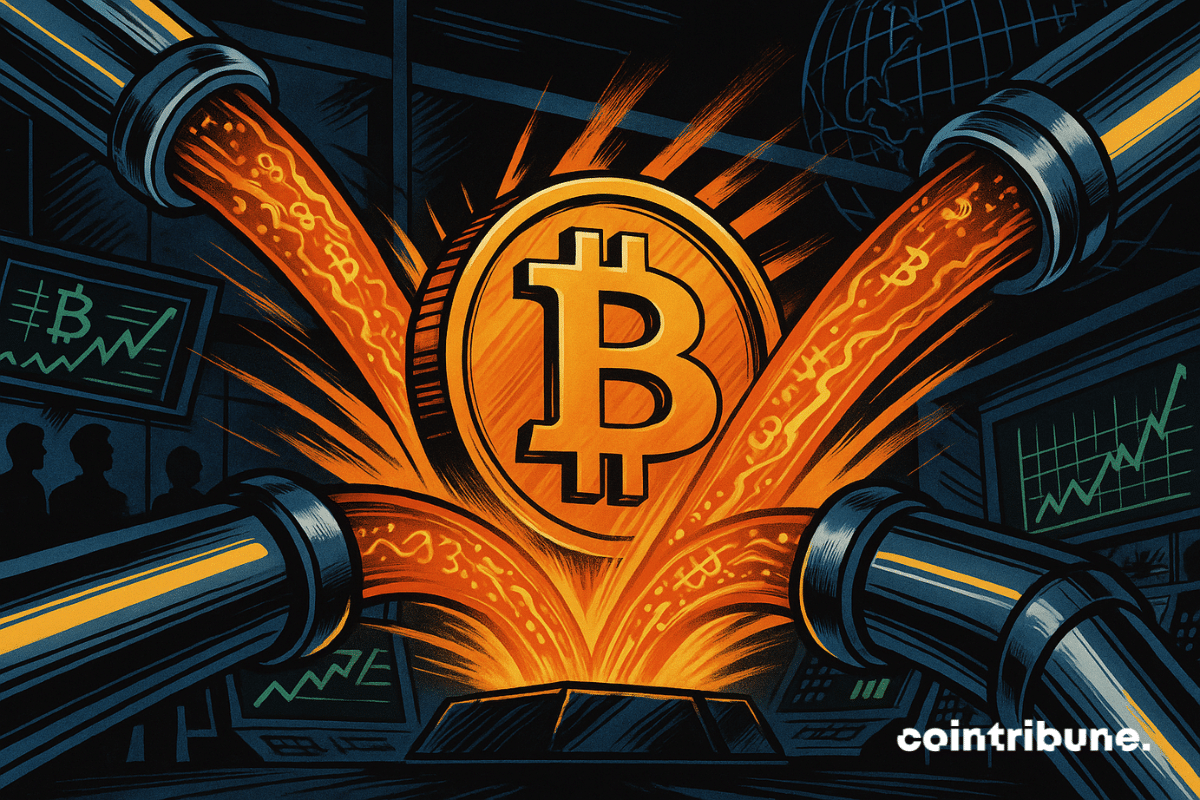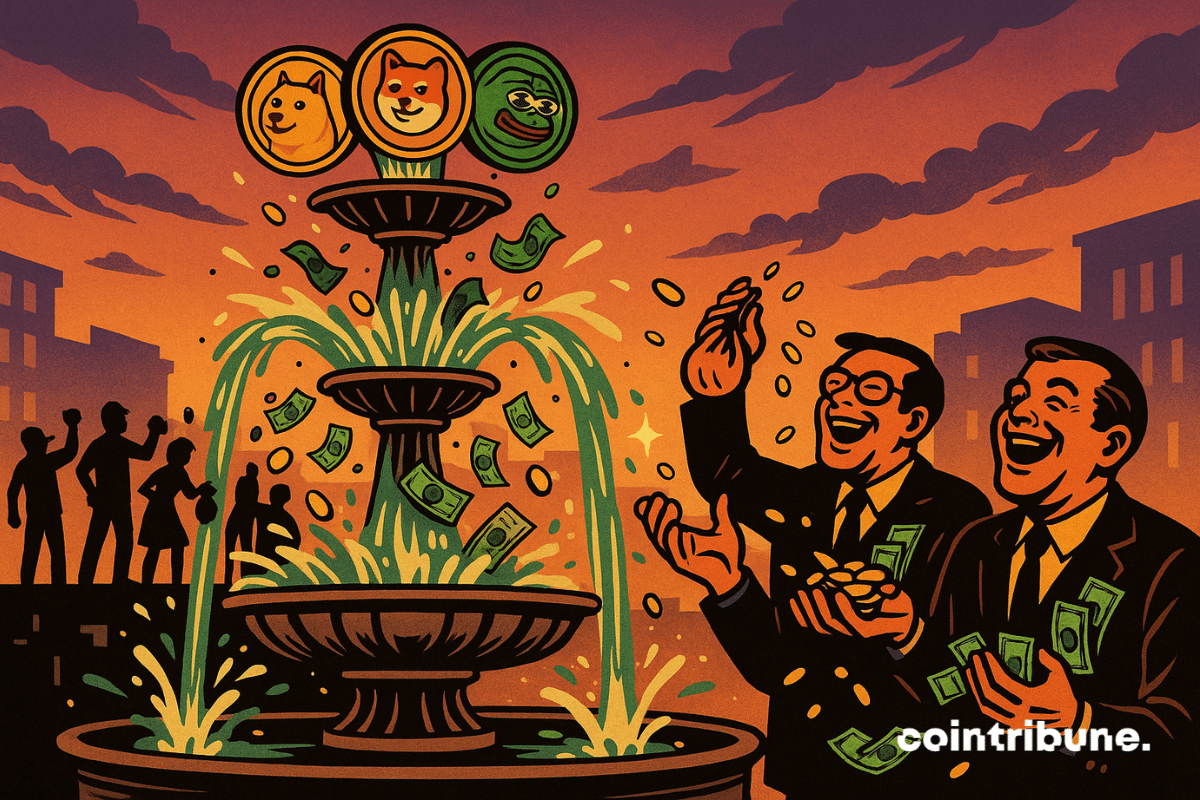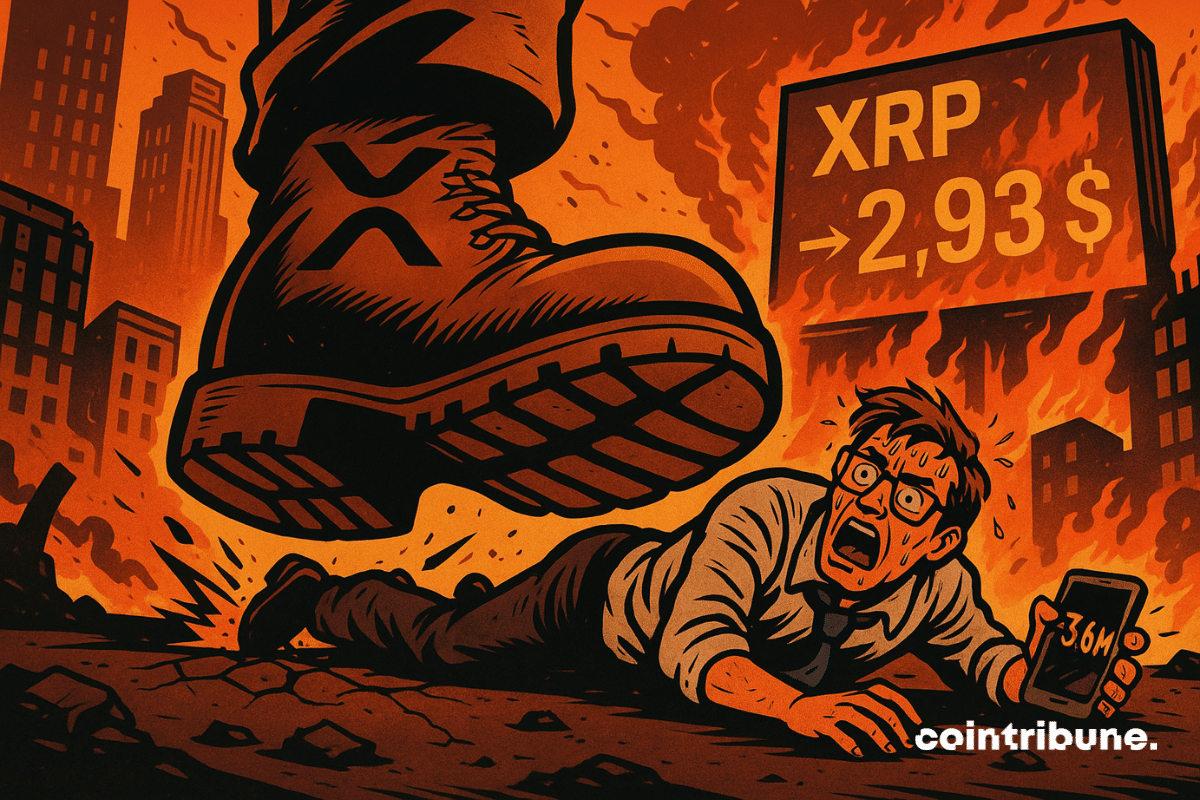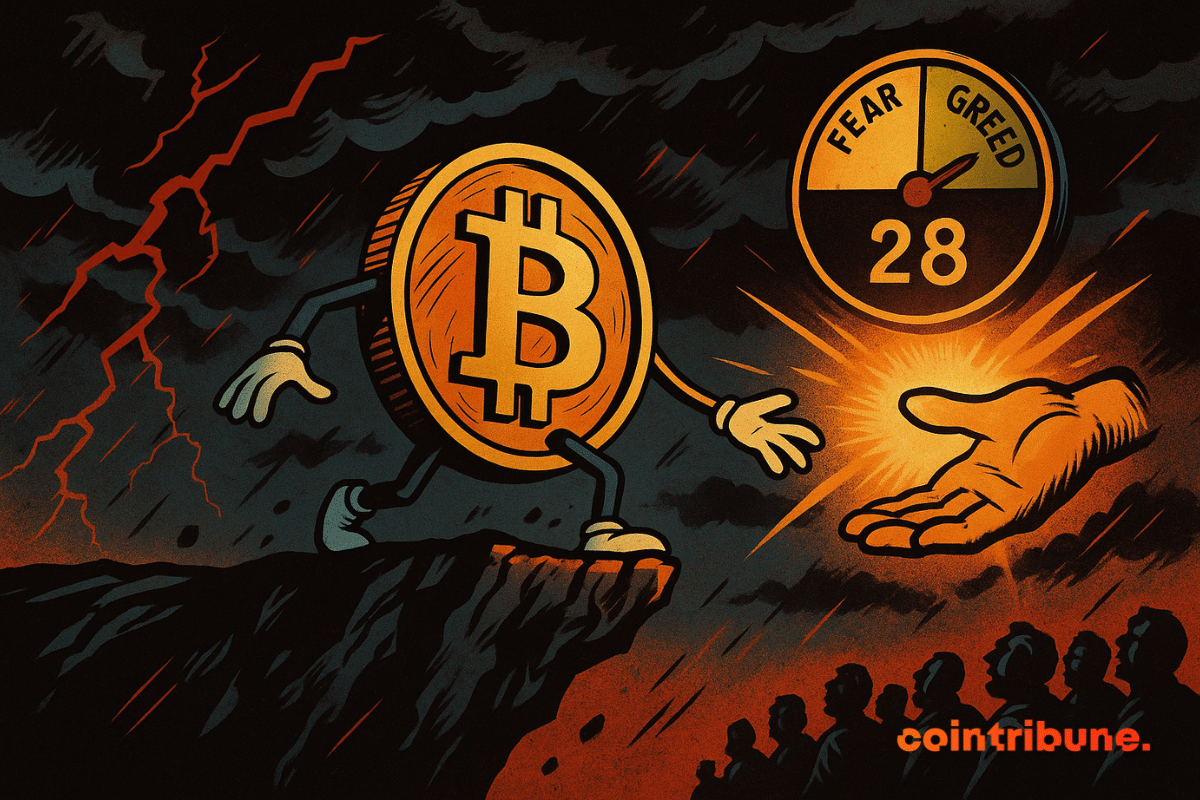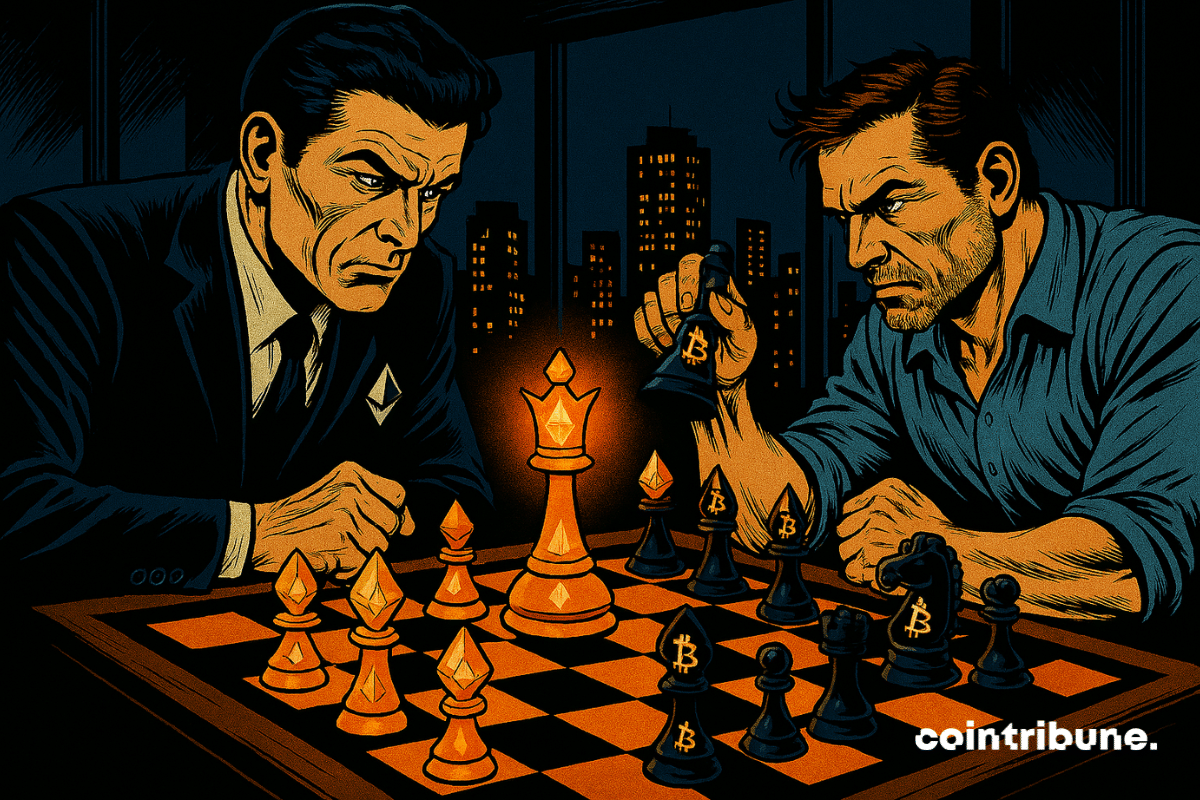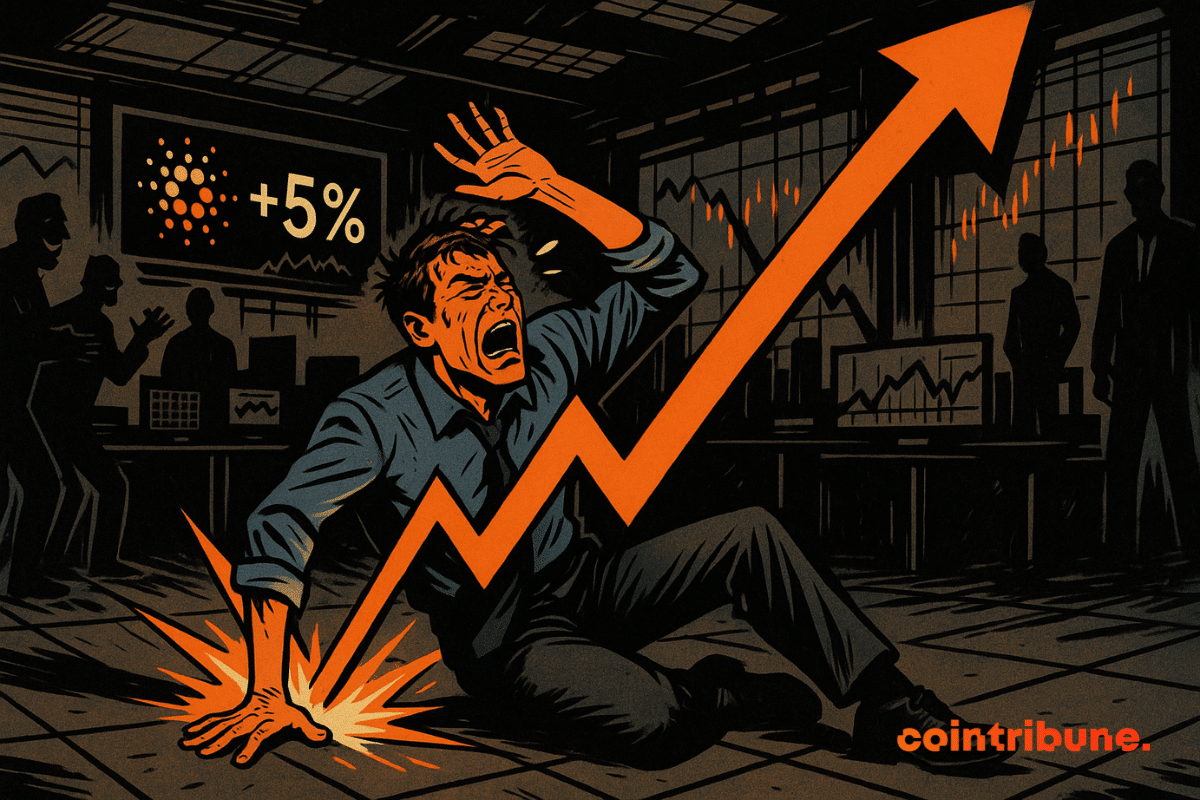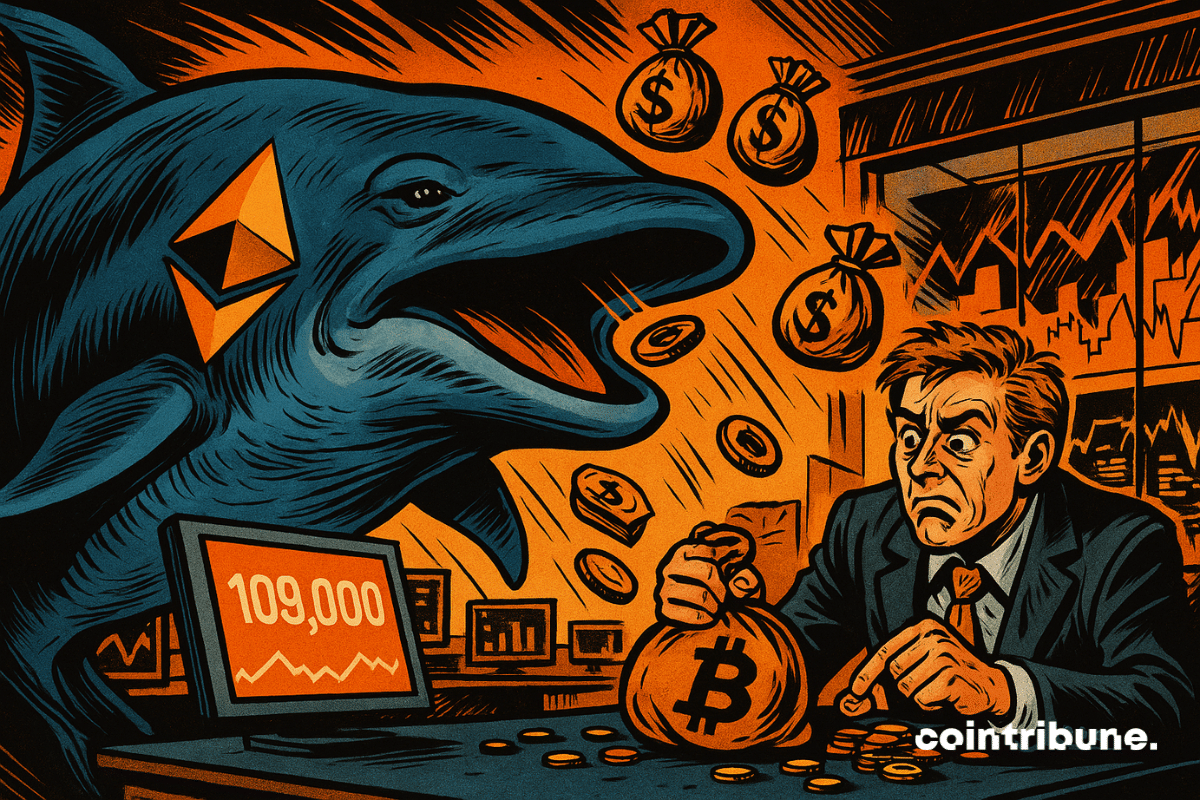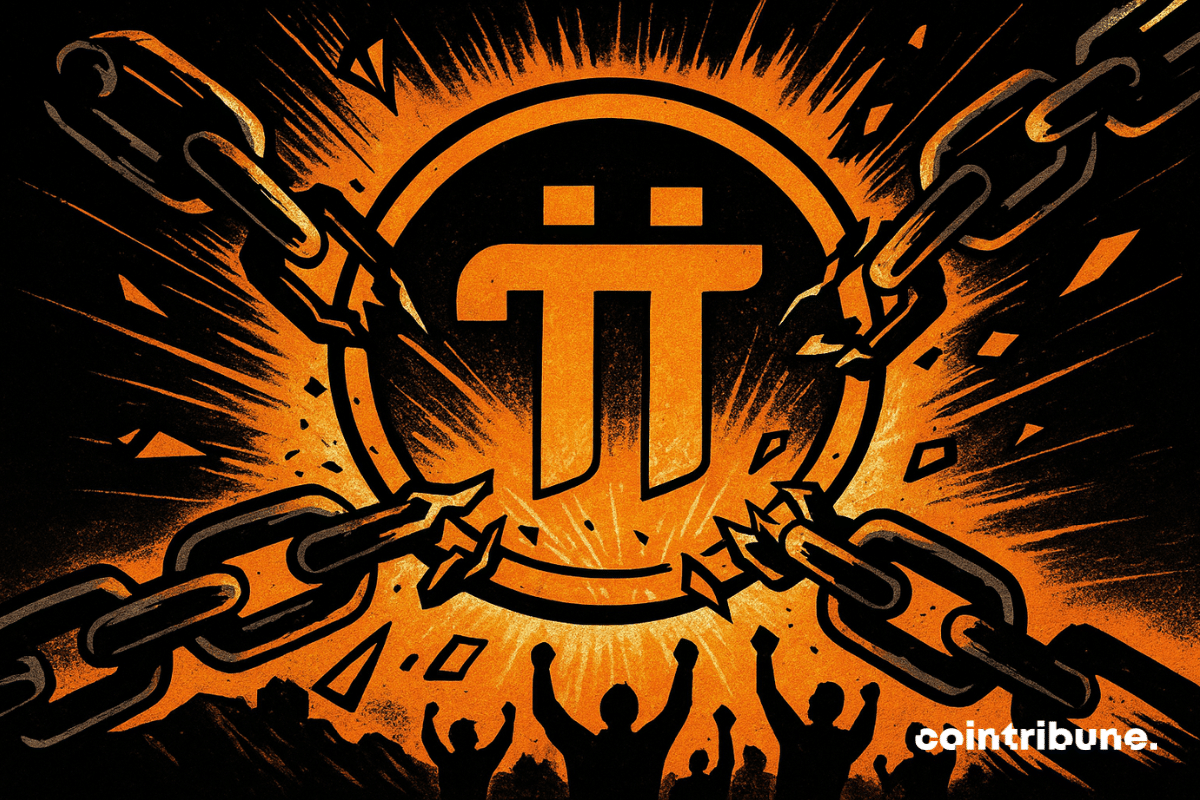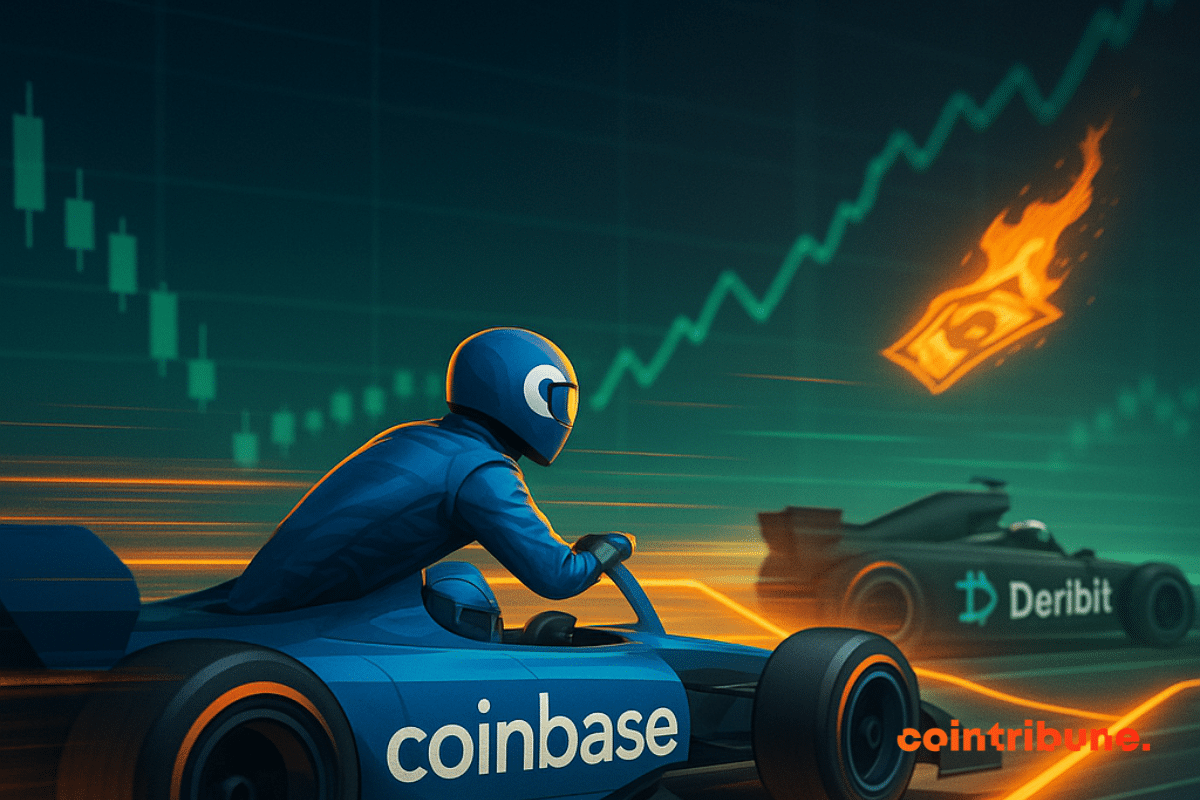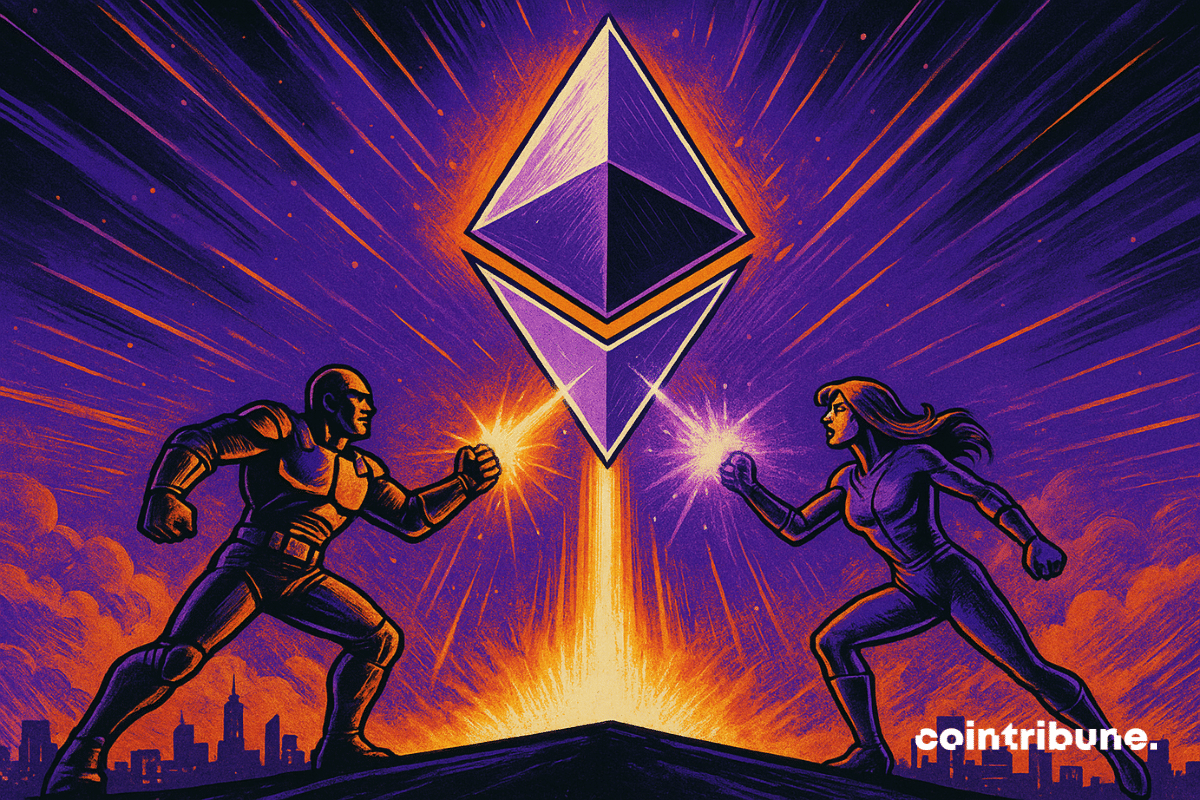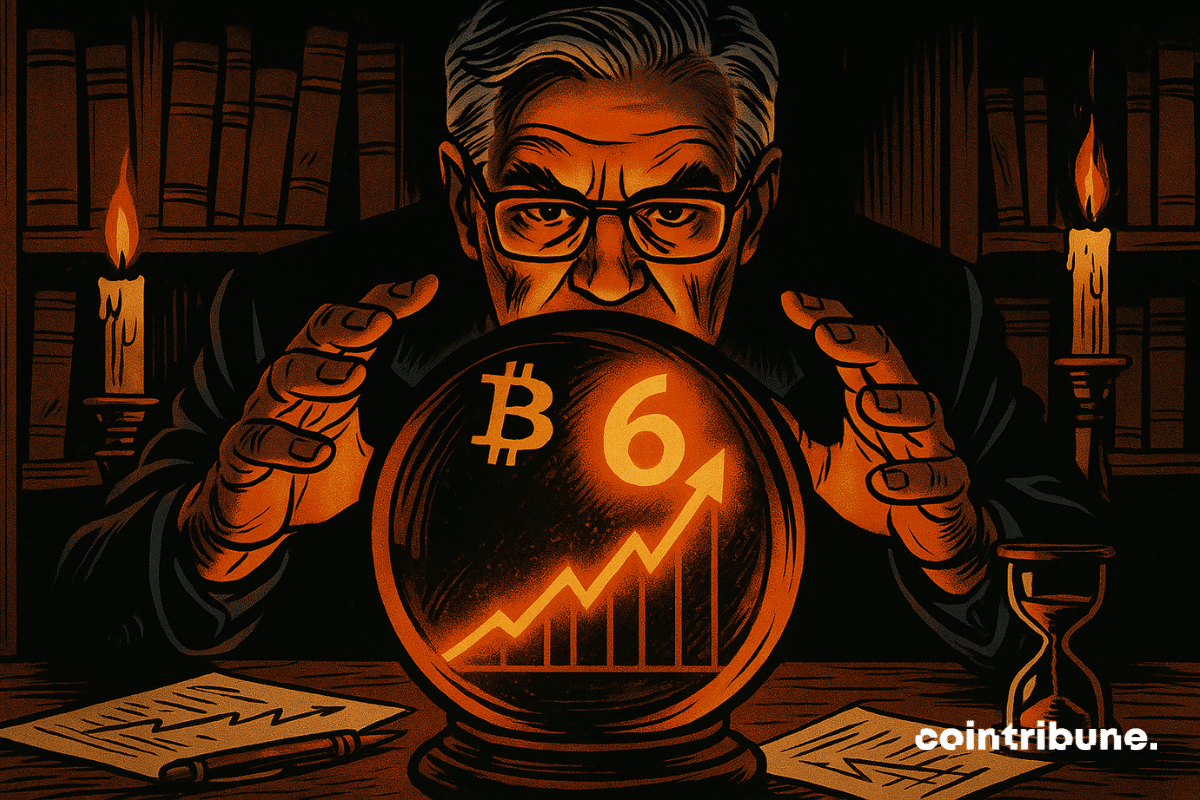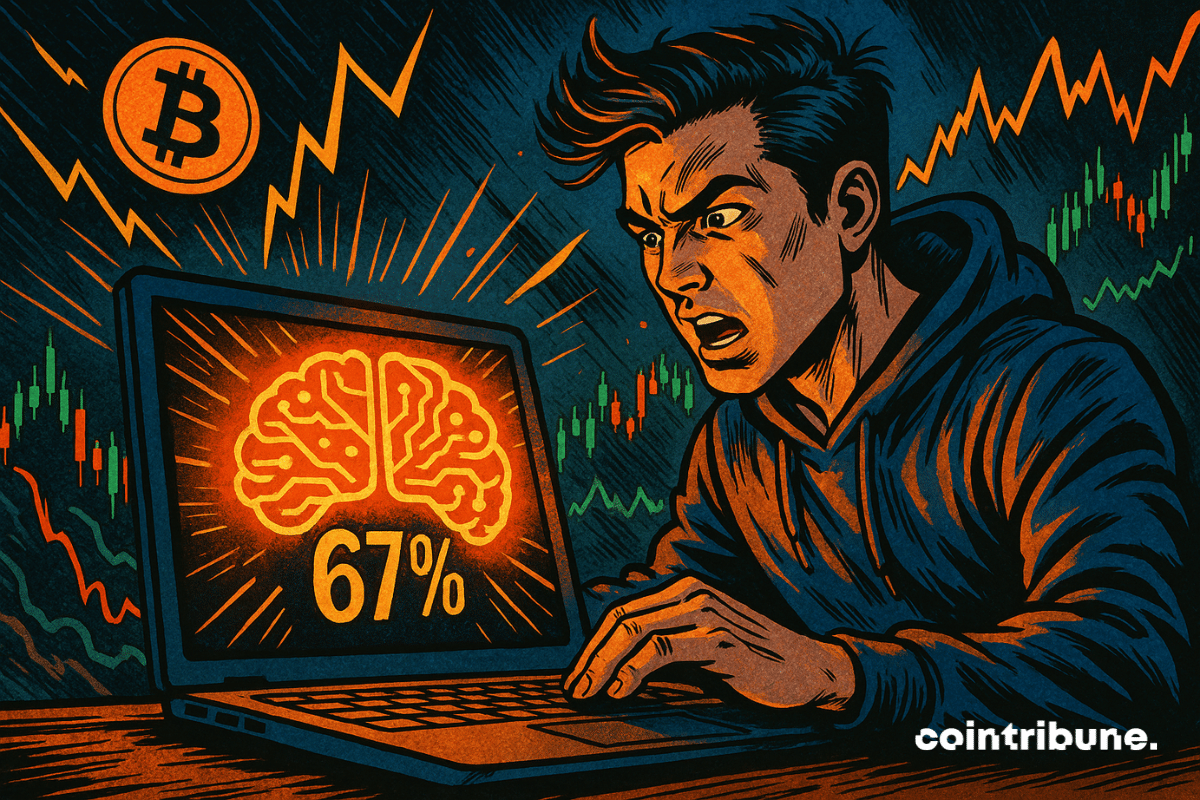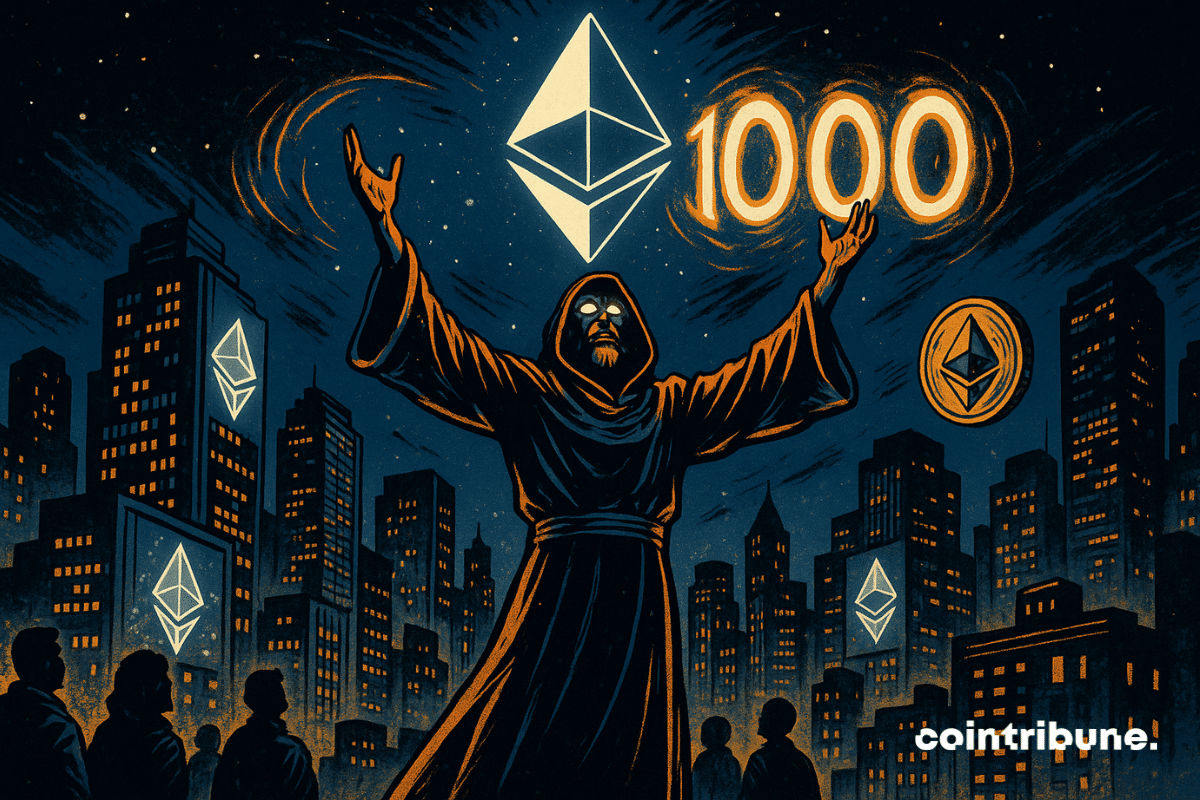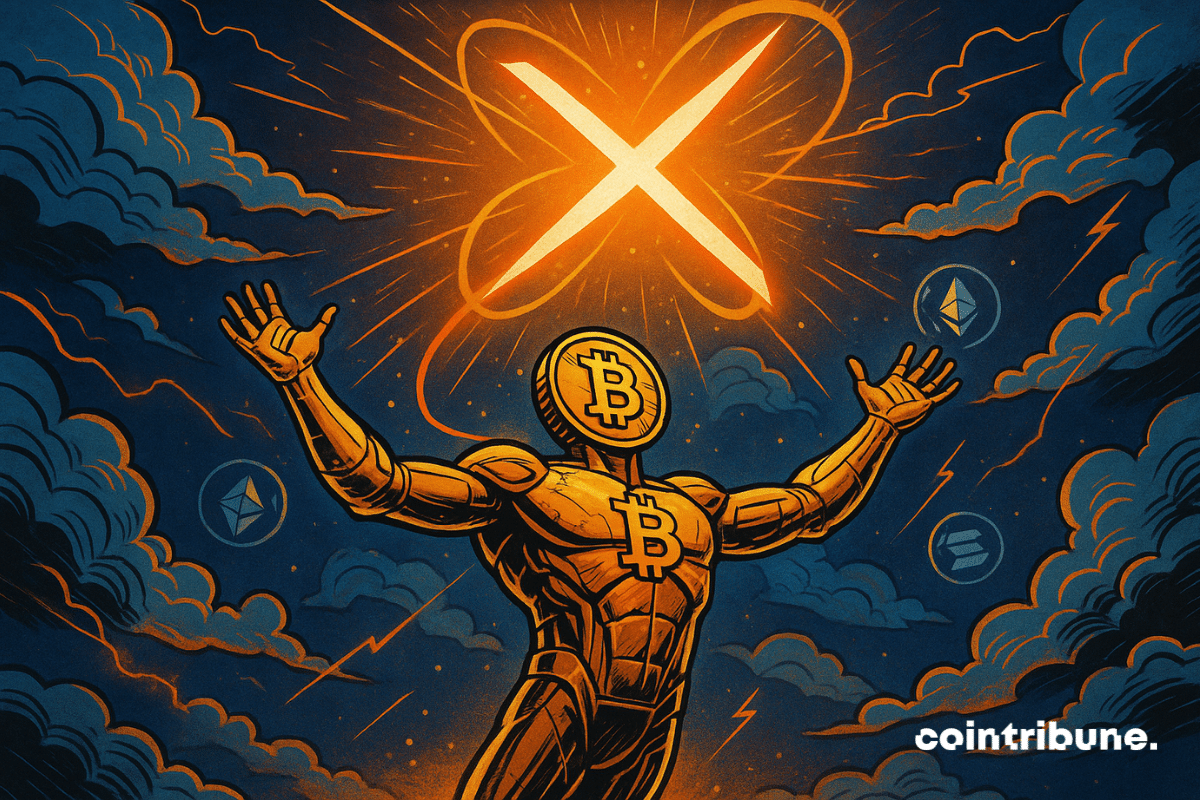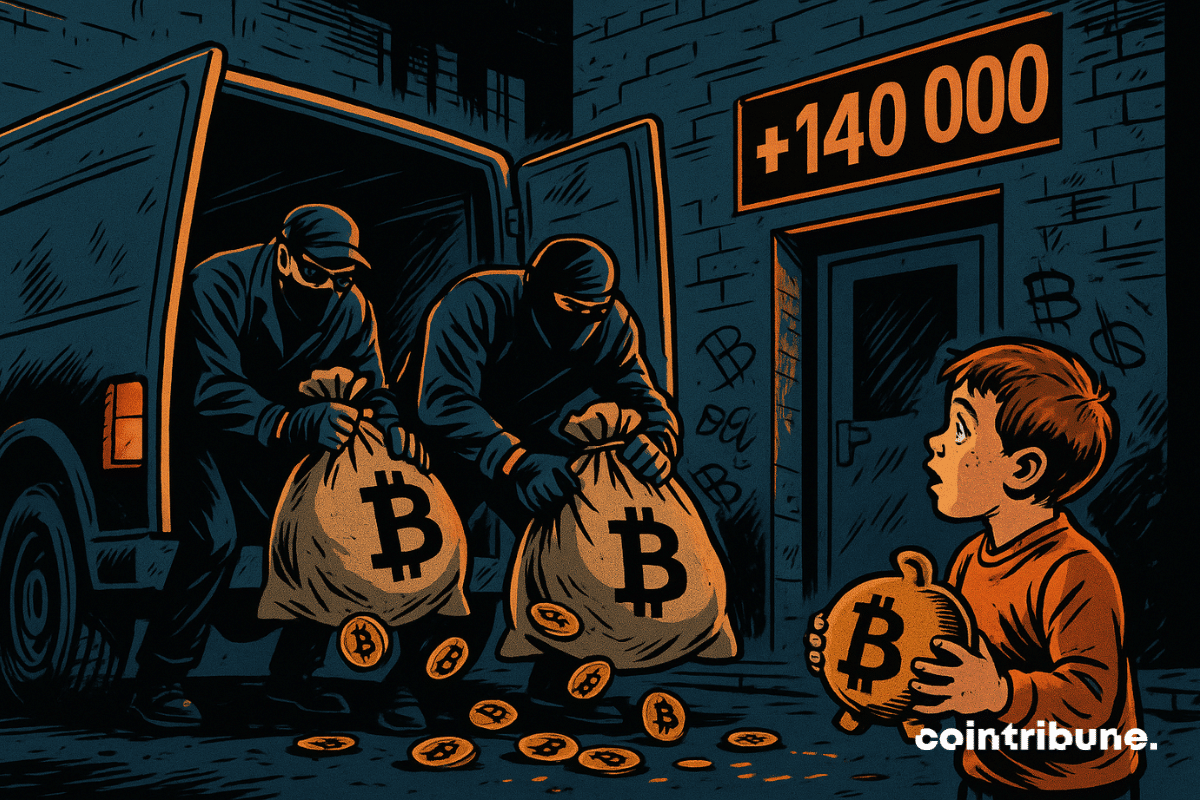Bitcoin is soaring, Binance is struggling, shrimps flee, whales dance… and ETFs scoop up the stakes. Here's a crypto-comedy that would be funny if it weren't so serious.
Trader
While bitcoin is bogged down under the spotlight, fleeing ETFs and traders under Lexomil: the crypto star rediscovers the joys of the plunge, 2022 version, remixed 2025.
The crypto market is wavering again, and the same question arises: has bitcoin finally hit rock bottom? While analysts are getting carried away and predictions are proliferating, the Santiment platform calls for caution. According to it, the real market bottoms never occur when everyone is expecting them. Behind collective optimism, it sees a formidable emotional trap, where overconfidence could precede a new downturn. What if the worst is not over yet?
Bitcoin’s sharp rebound, fueled by optimism over the end of the 40-day U.S. government shutdown, has split traders. While most market watchers welcomed the recovery, aggressive short sellers faced a costly squeeze. High-risk trader James Wynn is at the center of the turmoil after a series of rapid losses pushed him into an even larger short bet.
Bitcoin slips, whales abandon, small holders capitulate... what if the famous $92,000 gap became the new stopover? Bearish mood guaranteed.
While institutional interest in cryptos is rising again, the decisions of major players capture all the attention. This November 1st, Ripple plans to unlock 1 billion XRP, which is more than 2.4 billion dollars at the current price, from its escrow accounts, as part of a mechanism established in 2017 to regulate the supply. A regular operation, but one that, in the current climate, raises questions about liquidity strategies and market balance.
The crypto market, already known for its volatility, has just experienced another major shock. In just 24 hours, over $1.1 billion has been liquidated, revealing the ecosystem's fragility against increasingly influential macroeconomic forces. The fluctuations of bitcoin and altcoins have not escaped investors' attention, who saw their positions swept away by this wave of liquidations, increasing the risks associated with this uncertain market.
In a digital world saturated with unverified information, Intuition introduces a blockchain infrastructure designed to anchor reputation, knowledge, and structured data directly on-chain. Its ambition : to create a foundation for verifiable, composable information systems that serve both users and AI agents. Backed by $8.5 million in funding and strong testnet performance, the project enters production as one of the few Layer 3s to demonstrate real pre-launch traction.
Solana (SOL) hovered near $191.95 on October 25 after briefly testing $195 earlier in the day. The token has shown resilience amid shifting market momentum, with traders watching to see if it can turn the $192–$195 range into a new support zone.
The ghost Satoshi watches his bitcoins melt by 20 billion. Still silent, still rich... How long will the king of silence let chaos reign without a word?
When Solana releases a war engine called Ultra v3, it’s not the crypto traders who complain, but the competitors who cough. Fees falling, precision skyrocketing.
Cryptos are going through a storm. Bitcoin plunges more than 9%, Ethereum loses 6%, and XRP tumbles 15% within a week. Behind this debacle, a persistent belief divides investors: will the legendary four-year bitcoin cycle seal the market's fate, or is it an outdated relic in the age of institutional adoption?
While gold shines like never before, Peter Schiff brings out his anti-bitcoin refrain. What if this time, the crypto undertaker was (somewhat) right? To be continued...
Spot Bitcoin ETFs have just recorded their second-best historical week, with $3.24 billion in net inflows. This spectacular resurgence of interest occurs amidst an still uncertain economic climate, but rekindles hope for a dynamic fourth quarter for the crypto market. Far from a mere rebound, these massive flows reflect a clear reversal in institutional investors’ sentiment, on the eve of an October historically favorable to Bitcoin.
Memecoins attract, but the profits escape those who buy them. According to a report by Galaxy Research, these tokens, booming on Solana, primarily benefit platforms and trading bots. Far from the community image they project, they feed a fast market where retail investors, often losers, serve a well-oiled industrial mechanism.
When crypto goes up, he goes down. @qwatio, a relentless speculator, burns millions on XRP… and could well blow up at the next green candle. What are we waiting for to stop him?
Bitcoin in full panic, the index collapses... what if the storm was announcing a clearing? While the charts are turning red, some are arming themselves with patience.
James Wynn, the man who flirted with billions in crypto, now bets on ASTER… An airdrop, a 3x leverage, and a lot of boldness: hold-up or hara-kiri?
Bitcoin attracts bettors, Ethereum seduces bankers, Dogecoin dreams of an ETF and Tether dresses in gold: the crypto circus continues its show, between promises, glitters and persistent doubts.
Cardano fans are sulking, whales are stirring, and ADA is bouncing back. Yet another crypto farce where the impatience of small holders fattens the big holders.
Ethereum takes the prize for the big players, Bitcoin clings to its throne. A duel of numbers, egos and billions: who will emerge victorious from this digital waltz?
While Ethereum was showing off at nearly $5,000, Bitcoin was crashing… Traders saw their dreams evaporate faster than a presidential alibi.
While the wait around Pi Network drags on, a discreet statement from a moderator reignites hopes. Millions of users are still waiting to access their mined tokens, but a second migration to the mainnet could change the game. This signal, although unofficial, comes amid growing frustration. If it materializes, it would mark a strategic turning point for a project still locked in its mainnet, far from the promises of a truly accessible blockchain.
Coinbase strikes hard by buying Deribit, leader in crypto options, establishing itself as a central player in derivatives products. This strategic acquisition unifies spot, futures, perpetuals, and options, attracting institutions and experienced traders. In a competitive market, it strengthens Coinbase's appeal and marks a key step towards a global crypto empire.
Ether crosses a decisive milestone, flirting with $4,500 and narrowing the gap with its all-time high to less than $500. Indeed, behind this surge is a colossal accumulation strategy led by BitMine Immersion Technologies, which disrupts the market balance. In its wake, SharpLink and other institutional players massively strengthen their positions, propelling ETH to the rank of a must-have reserve asset alongside Bitcoin and confirming its central role.
The next weeks could decide the market's future, as bitcoin trades above 117,000 dollars. Indeed, legendary trader Peter Brandt warns that the crypto queen approaches a pivotal moment, possibly a temporary peak. With over ten years of post-halving cycle analysis, he cautions against a scenario that could surprise even seasoned investors. This alert comes as some experts doubt the relevance of bitcoin's historical cycle.
Crypto is unstable, and young traders have understood this well. To better manage risks, 67% of them use artificial intelligence to tame volatility. This is revealed by a recent study from MEXC Research. Rather than reacting in urgency, Generation Z relies on automated tools to maintain control.
As the crypto market rebounds, a prediction is resonating with the Ethereum community: a target of $10,000. Far from reckless speculation, this projection is made by Gert Van Lagen, a recognized analyst, who employs Elliott wave theory to substantiate his scenario. Shared on July 18 on the social network X (formerly Twitter), his analysis fits within a broader context of a global altcoin recovery. Structural vision or technical frenzy? This hypothesis fuels debate and raises questions about the real trajectory of ETH in the coming months.
On May 22, a new golden cross was formed on the Bitcoin chart, reactivating a signal that, in the past, has preceded soaring increases. While BTC remains below $120,000, analysts are closely monitoring this technical crossover between the 50 and 200-day moving averages. Already observed before the rallies of 2017 and 2020, this signal rekindles speculation about a bullish extension of the cycle that has been underway since the beginning of 2024.
Far from the usual excitement, the bitcoin market is experiencing a movement that is both massive and discreet: 140,000 BTC accumulated in two weeks by new investors. No euphoria on social media, no media frenzy, but a net inflow that contrasts sharply with the prevailing lethargy. This silent resurgence of interest, driven by profiles previously absent, could mark a turning point in the current cycle. The market is waking up, but this time, without a sound.
